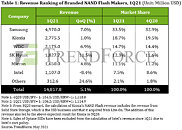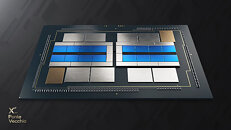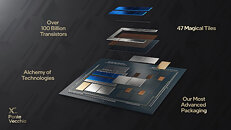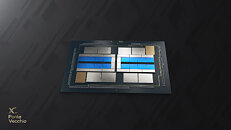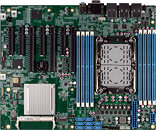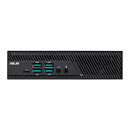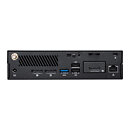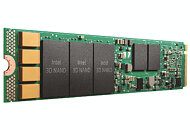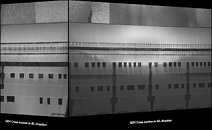Apr 18th, 2025 16:55 EDT
change timezone
Latest GPU Drivers
New Forum Posts
- GPU Pricing and Performance (16)
- Can Intel recover in DYI market anytime soon? (12)
- Gtx 1080 TI which is the best stable driver version available (2)
- RX 9000 series GPU Owners Club (394)
- Which 5080 graphics card? (0)
- Request for BIOS file of nVidia GeForce RTX A5000 from ThinkPad P15 Gen 2 (4)
- How to relubricate a fan and/or service a troublesome/noisy fan. (242)
- It's happening again, melting 12v high pwr connectors (1027)
- Place your bets, what node will rtx 6000/RDNA 5(UDNA 1?) use (8)
- TPU's Nostalgic Hardware Club (20257)
Popular Reviews
- ASUS GeForce RTX 5060 Ti TUF OC 16 GB Review
- NVIDIA GeForce RTX 5060 Ti PCI-Express x8 Scaling
- Palit GeForce RTX 5060 Ti Infinity 3 16 GB Review
- G.SKILL Trident Z5 NEO RGB DDR5-6000 32 GB CL26 Review - AMD EXPO
- ASUS GeForce RTX 5060 Ti Prime OC 16 GB Review
- Teevolution Terra Pro Review
- MSI GeForce RTX 5060 Ti Gaming OC 16 GB Review
- Zotac GeForce RTX 5060 Ti AMP 16 GB Review
- MSI GeForce RTX 5060 Ti Gaming Trio OC 16 GB Review
- ASUS GeForce RTX 5080 TUF OC Review
Controversial News Posts
- NVIDIA GeForce RTX 5060 Ti 16 GB SKU Likely Launching at $499, According to Supply Chain Leak (182)
- NVIDIA Sends MSRP Numbers to Partners: GeForce RTX 5060 Ti 8 GB at $379, RTX 5060 Ti 16 GB at $429 (127)
- Nintendo Confirms That Switch 2 Joy-Cons Will Not Utilize Hall Effect Stick Technology (105)
- NVIDIA Launches GeForce RTX 5060 Series, Beginning with RTX 5060 Ti This Week (102)
- Over 200,000 Sold Radeon RX 9070 and RX 9070 XT GPUs? AMD Says No Number was Given (100)
- Nintendo Switch 2 Launches June 5 at $449.99 with New Hardware and Games (99)
- Sony Increases the PS5 Pricing in EMEA and ANZ by Around 25 Percent (85)
- NVIDIA PhysX and Flow Made Fully Open-Source (77)
News Posts matching #Optane
Return to Keyword BrowsingNumemory Releases Optane Successor: "NM101" Storage-Class Memory
Numemory has introduced the NM101, a 64 Gb storage-class memory module that uses technology similar to Intel's now-discontinued Optane architecture. The device implements phase-change memory and crossbar technology in a 3D selector-only memory structure, matching Optane's 3200 MT/s transfer rate specification. The technical architecture diverges from Intel's implementation by using a single selector in its cross-point structure rather than the dual-selector approach of 3D XPoint memory. Operating at 1.2 V with an X8 bus width, the NM101 uses 3D stacking to achieve claimed performance metrics of 10x faster read/write speeds than NAND flash. Xincun Technology, which established the Numemory division in Wuhan in 2022, holds 273 patents related to the technology, including 60 international and 213 Chinese patents. The company's R&D team of 144 engineers has developed the architecture since 2019, three years before Intel ended its Optane program.
Production plans specify an initial manufacturing target of 10,000 units monthly by the end of 2025. Guao Technology has committed ¥10 billion to establish production facilities in Zhejiang province, with additional funding from the Anji county government. The NM101's operating temperature range spans 0-70°C, suitable for standard data center environments. While the device's specifications suggest the potential for data center deployment, specific IOPS and latency metrics remain unpublished. Initial production will serve domestic Chinese servers and storage manufacturers. The technology's viability in mass production remains to be demonstrated, particularly given the manufacturing challenges that contributed to Optane's market exit. The Chinese internal market is massive, so serving only domestic companies could be enough for Numemory at the beginning. If the company continues development, worldwide expansion could pick up where Optane stopped.
Production plans specify an initial manufacturing target of 10,000 units monthly by the end of 2025. Guao Technology has committed ¥10 billion to establish production facilities in Zhejiang province, with additional funding from the Anji county government. The NM101's operating temperature range spans 0-70°C, suitable for standard data center environments. While the device's specifications suggest the potential for data center deployment, specific IOPS and latency metrics remain unpublished. Initial production will serve domestic Chinese servers and storage manufacturers. The technology's viability in mass production remains to be demonstrated, particularly given the manufacturing challenges that contributed to Optane's market exit. The Chinese internal market is massive, so serving only domestic companies could be enough for Numemory at the beginning. If the company continues development, worldwide expansion could pick up where Optane stopped.

Intel Optane Still not Dead, Orders Expanded by Another Quarter
In July 2022, Intel announced that the company was winding down its Optane division, effectively discontinuing the development of 3D XPoint memory that it has been marketing for a long time. Once viewed as a competitive advantage, the support for Optane has been removed from future platforms. However, Intel has announced plans to extend Optane shipments by another quarter amidst additional stock or significant demand from customers buying Optane DIMMs for their enterprises. Initially set to ship the final Optane Persistent Memory 100-series DIMMs on September 30, Intel extends this date by three months to December 29, 2023.
Intel states, "Customers are recommended to secure additional Optane units at the specified 0.44% annualized failure rate (AFR) for safety stock. Intel will make commercially reasonable efforts to support last time order quantities for Intel Optane Persistent Memory 100 Series."
Intel states, "Customers are recommended to secure additional Optane units at the specified 0.44% annualized failure rate (AFR) for safety stock. Intel will make commercially reasonable efforts to support last time order quantities for Intel Optane Persistent Memory 100 Series."

Intel Exits Server Building Business Market Selling it to MiTAC
Intel has been pulling the plug on most of its non-core businesses, including Intel Optane, Intel network switches, and most lately, Intel 5G modems, now it is time to say goodbye to Intel's server building business, selling it to MiTAC, a parent company to Tyan.
While Intel was never a big player in the complete server system hardware market, it has, or rather had, a decent product lineup. Nevertheless, the company is following its IDM 2.0 strategy laid down by Pat Gelsinger, who took the reins as the CEO back in 2021 and made the decision to sell off its Data Center Solutions Group (DSG).
While Intel was never a big player in the complete server system hardware market, it has, or rather had, a decent product lineup. Nevertheless, the company is following its IDM 2.0 strategy laid down by Pat Gelsinger, who took the reins as the CEO back in 2021 and made the decision to sell off its Data Center Solutions Group (DSG).
Apex Storage Add-In-Card Hosts 21 M.2 SSDs, up to 168 TBs of Storage
Apex Storage, a new company in the storage world, has announced that its X21 add-in-card (AIC) has room for 21 (you read that right) PCIe 4.0 M.2 NVMe SSDs. The card supports up to 168 TBs with 8 TB M.2 NVMe SSDs and 336 TBs of storage with future 16 TB M.2 SSDs drives and can withstand speeds of up to 30.5 GB/s. Packed inside a single-slot, full-length, full-height AIC, the X21 card is built for a snug fit inside workstations and applications such as machine learning and hyper-converged infrastructure that enterprises need to develop inside servers and workstations across the site.
The X21 AIC has 100 PCIe lanes on the board, which indicates the presence of a PCIe switch, likely placed under the heatsink. To power all the storage, the PCIe slot itself needs to be more, and the card also has two 6-pin PCIe power connectors that provide 225 Watts of power in total. Interestingly, the heatsink is passively cooled, but Apex Storage suggests that there should be an active airflow with a minimum of 400 LFM to ensure the regular operation of the card. In the example application, the company laid out X21 with Samsung's 990 Pro SSDs; however, the card also supports Intel Optane drives. Read and Write IOPS are higher than 10 million. Additionally, the average read and write access latencies are 79 ms and 52 ms. Apex Storage didn't reveal the pricing and availability of the card; however, expect it to come with a premium.
The X21 AIC has 100 PCIe lanes on the board, which indicates the presence of a PCIe switch, likely placed under the heatsink. To power all the storage, the PCIe slot itself needs to be more, and the card also has two 6-pin PCIe power connectors that provide 225 Watts of power in total. Interestingly, the heatsink is passively cooled, but Apex Storage suggests that there should be an active airflow with a minimum of 400 LFM to ensure the regular operation of the card. In the example application, the company laid out X21 with Samsung's 990 Pro SSDs; however, the card also supports Intel Optane drives. Read and Write IOPS are higher than 10 million. Additionally, the average read and write access latencies are 79 ms and 52 ms. Apex Storage didn't reveal the pricing and availability of the card; however, expect it to come with a premium.

Intel Expects to Lose More Market Share, to Reconsider Exiting Other Businesses
During Evercore ISI TMT conference, Intel announced that the company would continue to lose market share, with a possible bounce back in the coming years. According to the latest report, Intel's CEO Pat Gelsinger announced that he expects the company to continue to lose its market share to AMD as the competition has "too much momentum" going for it. AMD's Ryzen and EPYC processors continue to deliver power and efficiency performance figures, which drives customers towards the company. On the other hand, Intel expects a competing product, especially in the data center business with Sapphire Rapids Xeon processors, set to arrive in 2023. Pat Gelsinger noted, "Competition just has too much momentum, and we haven't executed well enough. So we expect that bottoming. The business will be growing, but we do expect that there continues to be some share losses. We're not keeping up with the overall TAM growth until we get later into '25 and '26 when we start regaining share, material share gains."
The only down years that are supposed to show a toll of solid competition are 2022 and 2023. As far as creating a bounceback, Intel targets 2025 and 2026. "Now, obviously, in 2024, we think we're competitive. 2025, we think we're back to unquestioned leadership with our transistors and process technology," noted CEO Gelsinger. Additionally, he had a say about the emerging Arm CPUs competing for the same server market share as Intel and AMD do so, stating that "Well, when we deliver the Forest product line, we deliver power performance leadership versus all Arm alternatives, as well. So now you go to a cloud service provider, and you say, 'Well, why would I go through that butt ugly, heavy software lift to an ARM architecture versus continuing on the x86 family?"
The only down years that are supposed to show a toll of solid competition are 2022 and 2023. As far as creating a bounceback, Intel targets 2025 and 2026. "Now, obviously, in 2024, we think we're competitive. 2025, we think we're back to unquestioned leadership with our transistors and process technology," noted CEO Gelsinger. Additionally, he had a say about the emerging Arm CPUs competing for the same server market share as Intel and AMD do so, stating that "Well, when we deliver the Forest product line, we deliver power performance leadership versus all Arm alternatives, as well. So now you go to a cloud service provider, and you say, 'Well, why would I go through that butt ugly, heavy software lift to an ARM architecture versus continuing on the x86 family?"

Intel to Shut Down Optane Memory Business, Retire 3D XPoint Memory
Intel's pioneering 3D X-point Memory, which sought to bridge the gap between non-volatile Flash memory, and volatile DRAM, stares at an untimely demise, as Intel plans to wind up both its Optane Memory business, as well as further development of 3D XPoint. The industry's reception of Optane Memory has been lukewarm; while cheap NVMe SSDs have driven Optane out of the client segment. Intel in its Q2-2022 Financial Results release, announced that it has initiated the winding down of the Optane Memory business, and that the company is incurring a $559 million "Optane Memory Impairment" charge this quarter.
3D XPoint faces technological competition from the latest crop of 3D-stacked Flash memory, which is achieving over 200 layers of density; while the latest generation of PCI-Express Gen 5.0 controllers enable data-rates in excess of 10 GB/s, and certain enterprise-relevant features of PCIe Gen 5. In a statement released to AnandTech, Intel says: "We continue to rationalize our portfolio in support of our IDM 2.0 strategy. This includes evaluating divesting businesses that are either not sufficiently profitable or not core to our strategic objectives. After careful consideration, Intel plans to cease future product development within its Optane business. We are committed to supporting Optane customers through the transition."
3D XPoint faces technological competition from the latest crop of 3D-stacked Flash memory, which is achieving over 200 layers of density; while the latest generation of PCI-Express Gen 5.0 controllers enable data-rates in excess of 10 GB/s, and certain enterprise-relevant features of PCIe Gen 5. In a statement released to AnandTech, Intel says: "We continue to rationalize our portfolio in support of our IDM 2.0 strategy. This includes evaluating divesting businesses that are either not sufficiently profitable or not core to our strategic objectives. After careful consideration, Intel plans to cease future product development within its Optane business. We are committed to supporting Optane customers through the transition."
SMART Modular Announces the SMART Kestral PCIe Optane Memory Add-in-Card to Enable Memory Expansion and Acceleration
SMART Modular Technologies, Inc. ("SMART"), a division of SGH and a global leader in memory solutions, solid-state drives, and hybrid storage products, announces its new SMART Kestral PCIe Optane Memory Add-in-Card (AIC), which is able to add up to 2 TB of Optane Memory expansion on a PCIe-Gen4-x16 or PCIe-Gen3-x16 interface independent of the motherboard CPU. SMART's Kestral AICs accelerate selected algorithms by offloading software-defined storage functions from the host CPU to the Intel FPGA on the AIC. SMART's Kestral memory AICs are ideal for hyperscale, data center, and other similar environments that run large memory applications, and would benefit from memory acceleration or system acceleration through computational storage.
"With the advancement of new interconnect standards such as CXL and OpenCAPI, SMART's new family of SMART Kestral AICs addresses the industry's need for a variety of new memory module form factors and interfaces for memory expansion and acceleration," stated Mike Rubino, SMART Modular's vice president of engineering. "SMART is able to leverage our many years of experience in developing and productizing controller-based memory solutions to meet today's emerging and continually evolving memory add-on needs of server and storage system customers."
"With the advancement of new interconnect standards such as CXL and OpenCAPI, SMART's new family of SMART Kestral AICs addresses the industry's need for a variety of new memory module form factors and interfaces for memory expansion and acceleration," stated Mike Rubino, SMART Modular's vice president of engineering. "SMART is able to leverage our many years of experience in developing and productizing controller-based memory solutions to meet today's emerging and continually evolving memory add-on needs of server and storage system customers."

Intel Optane not Popular with Customers, $600M Loss in 2020
Despite its technical advantages over NAND flash, Intel's Optane memory technology never really took off in the consumer space, largely due to its much higher costs. Based on details from Intel's SEC filings, it would appear that its corporate customers haven't been overly impressed either, as Intel filed a US$576 million loss in 2020 with regards to its Optane business.
As to if this trend continued in 2021, we're going to have to wait and see, but it looks like the losses are set to continue based on its revenue figures, according to Blocks and Files. With this in mind, it seems like Micron's exit from 3D XPoint memory isn't so hard to understand, as the technology is clearly too costly to make up for the benefits on offer, for most of its potential customer base. Transitions to higher-density 3D XPoint memory has also been slow, which might be yet another reason customers have shied away from using it, even as a caching solution in storage servers. It wouldn't surprise us if Intel moves on from Optane/3D XPoint memory in the near future, as the company seems to have shifted its focus firmly away from storage solutions.
As to if this trend continued in 2021, we're going to have to wait and see, but it looks like the losses are set to continue based on its revenue figures, according to Blocks and Files. With this in mind, it seems like Micron's exit from 3D XPoint memory isn't so hard to understand, as the technology is clearly too costly to make up for the benefits on offer, for most of its potential customer base. Transitions to higher-density 3D XPoint memory has also been slow, which might be yet another reason customers have shied away from using it, even as a caching solution in storage servers. It wouldn't surprise us if Intel moves on from Optane/3D XPoint memory in the near future, as the company seems to have shifted its focus firmly away from storage solutions.
Global NAND Flash Revenue for 1Q21 Rises by 5.1% QoQ Thanks to Better-Than-Expected Demand for Notebooks and Smartphones, Says TrendForce
Total NAND Flash revenue for 1Q21 increased by 5.1% QoQ to US$14.82 billion, according to TrendForce's latest investigations. In particular, bit shipments rose by 11% QoQ, while the overall ASP dropped by 5% QoQ; hence, bit shipment growth offset the decline in the overall ASP. Although NAND Flash demand from notebook computer and smartphone manufacturers remained high, clients from the data center segment exhibited relatively weak demand, since this segment had yet to leave the state of NAND Flash oversupply. Contract prices for this quarter therefore still mostly showed a considerable QoQ drop. On the other hand, OEMs/ODMs of end products began to increase procurement of NAND Flash products from the second half of January onward because they noticed that the shortage of NAND Flash controller ICs was affecting the production of medium- and low-density storage products. Besides avoiding a possible supply crunch in the future, OEMs/ODMs were placing additional orders because they were preparing for a push to expand market share. On account of these developments, the overall NAND Flash demand surpassed expectations in 1Q21.

Intel Announces Optane Memory H20
Intel announced its new memory and storage product for client, Intel Optane memory H20 with solid state storage. Delivering innovation in storage through 11th Gen Intel Core processor-based platforms, Intel Optane memory H20 offers a personalized computing experience with a new level of performance and large storage capacity options for gamers, media and content creators, everyday users and professionals.
By combining the best attributes of Intel Optane technology and Intel QLC 3D NAND technology, Intel Optane memory H20 brings together two revolutionary memory and storage technologies on a single M.2 2280 form factor device. The versatile M.2 form factor works in everything from Intel Evo laptops to traditional desktops, as well as all-in-ones and mini-PCs. Providing improved performance and responsiveness with lower power consumption compared with the prior-generation product, Intel Optane memory H20 accelerates what you use most, from everyday tasks to managing large media and gaming files and applications.
By combining the best attributes of Intel Optane technology and Intel QLC 3D NAND technology, Intel Optane memory H20 brings together two revolutionary memory and storage technologies on a single M.2 2280 form factor device. The versatile M.2 form factor works in everything from Intel Evo laptops to traditional desktops, as well as all-in-ones and mini-PCs. Providing improved performance and responsiveness with lower power consumption compared with the prior-generation product, Intel Optane memory H20 accelerates what you use most, from everyday tasks to managing large media and gaming files and applications.

Intel Ponte Vecchio GPU Scores Another Win in Leibniz Supercomputing Centre
Today, Lenovo in partnership with Intel has announced that Leibniz Supercomputing Centre (LRZ) is building a supercomputer powered by Intel's next-generation technologies. Specifically, the supercomputer will use Intel's Sapphire Rapids CPUs in combination with the highly-teased Ponte Vecchio GPUs to power the applications running at Leibniz Supercomputing Centre. Along with the various processors, the LRZ will also deploy Intel Optane persistent memory to process the huge amount of data the LRZ has and is producing. The integration of HPC and AI processing will be enabled by the expansion of LRZ's current supercomputer called SuperMUG-NG, which will receive an upgrade in 2022, which will feature both Sapphire Rapids and Ponte Vecchio.
Mr. Raja Koduri, Intel graphics guru, has on Twitter teased that this supercomputer installment will represent a combination of Sapphire Rapids, Ponte Vecchio, Optane, and One API all in one machine. The system will use over one petabyte of Distributed Asynchronous Object Storage (DAOS) based on the Optane technologies. Then, Mr. Koduri has teased some Ponte Vecchio eye candy, which is a GIF of tiles combining to form a GPU, which you can check out here. You can also see some pictures of Ponte Vecchio below.
Mr. Raja Koduri, Intel graphics guru, has on Twitter teased that this supercomputer installment will represent a combination of Sapphire Rapids, Ponte Vecchio, Optane, and One API all in one machine. The system will use over one petabyte of Distributed Asynchronous Object Storage (DAOS) based on the Optane technologies. Then, Mr. Koduri has teased some Ponte Vecchio eye candy, which is a GIF of tiles combining to form a GPU, which you can check out here. You can also see some pictures of Ponte Vecchio below.

AAEON Announces ARES-WHI0 Server Board
AAEON, an industry leader of AI and IOT solutions, is excited to celebrate the launch of Intel's latest scalable platform, the 3rd Generation Intel Xeon Scalable Processors (formerly Ice Lake-SP). As an associate member of the Intel IoT Solutions Alliance, AAEON is excited to bring this new technology to market with the ARES-WHI0 industrial ATX server board and other future products.
The 3rd Generation Intel Xeon Scalable Processors deliver the next generation of high-end computing performance and support for vital data integrity and security technologies. This new generation of Xeon SP brings higher processing speeds and Intel's Deep Learning Boost technology, allowing for greater acceleration and more efficient processing for AI server applications.
The 3rd Generation Intel Xeon Scalable Processors deliver the next generation of high-end computing performance and support for vital data integrity and security technologies. This new generation of Xeon SP brings higher processing speeds and Intel's Deep Learning Boost technology, allowing for greater acceleration and more efficient processing for AI server applications.

ASUS Announces Mini PC PB62
ASUS today announced Mini PC PB62, a durable computer that delivers powerful performance to provide flexibility, expandability and performance to suit a range of business applications, including digital signage, point-of-sales (POS) system, kiosks and intelligent vending machines. Mini PC PB62 is powered by the latest desktop-grade up to 11th Generation Intel Core processor and fast DDR4 3200 MHz memory.
Engineered for performance: 11th Gen Intel Core, DDR4 3200 MHz memory and Intel Optane
With the latest up to 11th Gen Intel Core i7 processors, Mini PC PB62 is caters for with support for either a 35- or 65-watt CPU - so it's ready to be specified for supreme efficiency or maximum performance. PB62 also has built-in support for Intel Optane H20 memory, the technology that greatly improves storage speeds, enables frequently-used documents, pictures, videos and applications to be accessed more quickly while improving overall system performance to maximize productivity and efficiency.
Engineered for performance: 11th Gen Intel Core, DDR4 3200 MHz memory and Intel Optane
With the latest up to 11th Gen Intel Core i7 processors, Mini PC PB62 is caters for with support for either a 35- or 65-watt CPU - so it's ready to be specified for supreme efficiency or maximum performance. PB62 also has built-in support for Intel Optane H20 memory, the technology that greatly improves storage speeds, enables frequently-used documents, pictures, videos and applications to be accessed more quickly while improving overall system performance to maximize productivity and efficiency.

Micron Abandons 3D XPoint Memory & Looks to Sell Factory
Micron and Intel started development on 3D XPoint memory technology back in 2012 and by 2015 Intel had announced their Optane branded lineup of storage products featuring the new memory. Micron estimated that the chips would be sold for half the price of DRAM but five times the cost of flash memory and started limited manufacturing at a jointly owned factory in Lehi, Utah. The new technology was proposed as the future of memory but with Intel being the only major manufacturer of products that dream has not been realized. While the Intel Optane lineup of products has been generally well-received the high-cost and limited use cases have limited its adoption.
Micron has been dissolving its partnership with Intel over the years with their joint 3D XPoint development program ending in 2019 and Micron exercising their right to acquire Intel's share of the factory. This left Intel in the position of purchasing 3D XPoint wafers from Micron for use in their Optane products however this wasn't enough to fully utilize the facilities production and as such Micron has consistently been losing money on the factory. Micron has decided to sell the factory and is now in discussions with potential buyers the most likely being Intel to take over the facility. Intel has announced that their strategy for Optane products will remain the same and that supply will continue.
Micron has been dissolving its partnership with Intel over the years with their joint 3D XPoint development program ending in 2019 and Micron exercising their right to acquire Intel's share of the factory. This left Intel in the position of purchasing 3D XPoint wafers from Micron for use in their Optane products however this wasn't enough to fully utilize the facilities production and as such Micron has consistently been losing money on the factory. Micron has decided to sell the factory and is now in discussions with potential buyers the most likely being Intel to take over the facility. Intel has announced that their strategy for Optane products will remain the same and that supply will continue.

Intel Discontinues All Consumer Optane-Only SSD Products
Intel has quietly announced the discontinuation of all Optane Memory SSDs for the consumer market. The company also confirmed that going forward they had no plans to release any new consumer Optane-Only SDDs. The Intel Optane Memory M10, 800P, 900P, and 905P series SSDs have now all been discontinued with final shipments going out next month. Intel has directed users to look at their Optane Memory H20 with Solid State Storage as a potential replacement, the H20 is a QLC M.2 SSD with 32 GB of Optane memory offered in 1 TB and 2 TB configurations. If you are looking to purchase an Intel Optane-Only SSD you will have to act quickly as once stocks run out they won't be returning.

SK hynix to Acquire Intel NAND Flash Memory Business for $9 Billion
SK hynix and Intel today announced that they have signed an agreement on Oct. 20, KST, under which SK hynix would acquire Intel's NAND memory and storage business for US $9 billion. The transaction includes the NAND SSD business, the NAND component and wafer business, and the Dalian NAND memory manufacturing facility in China. Intel will retain its distinct Intel Optane business.
SK hynix and Intel will endeavor to obtain required governmental approvals expected in late 2021. Following receipt of these approvals, SK hynix will acquire from Intel the NAND SSD business (including NAND SSD-associated IP and employees), as well as the Dalian facility, with the first payment of US $7 billion. SK hynix will acquire from Intel the remaining assets, including IP related to the manufacture and design of NAND flash wafers, R&D employees, and the Dalian fab workforce, upon a final closing, expected to occur in March 2025 with the remaining payment of US $2 billion. Per the agreement, Intel will continue to manufacture NAND wafers at the Dalian Memory Manufacturing Facility and retain all IP related to the manufacture and design of NAND flash wafers until the final closing.
SK hynix and Intel will endeavor to obtain required governmental approvals expected in late 2021. Following receipt of these approvals, SK hynix will acquire from Intel the NAND SSD business (including NAND SSD-associated IP and employees), as well as the Dalian facility, with the first payment of US $7 billion. SK hynix will acquire from Intel the remaining assets, including IP related to the manufacture and design of NAND flash wafers, R&D employees, and the Dalian fab workforce, upon a final closing, expected to occur in March 2025 with the remaining payment of US $2 billion. Per the agreement, Intel will continue to manufacture NAND wafers at the Dalian Memory Manufacturing Facility and retain all IP related to the manufacture and design of NAND flash wafers until the final closing.

Intel Enters Strategic Collaboration with Lightbits Labs
Intel Corp. and Lightbits Labs today announced an agreement to propel development of disaggregated storage solutions to solve the challenges of today's data center operators who are craving improved total-cost-of-ownership (TCO) due to stranded disk capacity and performance. This strategic partnership includes technical co-engineering, go-to-market collaboration and an Intel Capital investment in Lightbits Labs. Lightbits' LightOS product delivers high-performance shared storage across servers while providing high availability and read-and-write management designed to maximize the value of flash-based storage. LightOS, while being fully optimized for Intel hardware, provides customers with vastly improved storage efficiency and reduces underutilization while maintaining compatibility with existing infrastructure without compromising performance and simplicity.
Lightbits Labs will enhance its composable disaggregated software-defined storage solution, LightOS, for Intel technologies, creating an optimized software and hardware solution. The system will utilize Intel Optane persistent memory and Intel 3D NAND SSDs based on Intel QLC Technology, Intel Xeon Scalable processors with unique built-in artificial intelligence (AI) acceleration capabilities and Intel Ethernet 800 Series Network Adapters with Application Device Queues (ADQ) technology. Intel's leadership FPGAs for next-generation performance, flexibility and programmability will complement the solution.
Lightbits Labs will enhance its composable disaggregated software-defined storage solution, LightOS, for Intel technologies, creating an optimized software and hardware solution. The system will utilize Intel Optane persistent memory and Intel 3D NAND SSDs based on Intel QLC Technology, Intel Xeon Scalable processors with unique built-in artificial intelligence (AI) acceleration capabilities and Intel Ethernet 800 Series Network Adapters with Application Device Queues (ADQ) technology. Intel's leadership FPGAs for next-generation performance, flexibility and programmability will complement the solution.

Intel Xeon Scalable "Ice Lake-SP" 28-core Die Detailed at Hot Chips - 18% IPC Increase
Intel in the opening presentation of the Hot Chips 32 virtual conference detailed its next-generation Xeon Scalable "Ice Lake-SP" enterprise processor. Built on the company's 10 nm silicon fabrication process, "Ice Lake-SP" sees the first non-client and non-mobile deployment of the company's new "Sunny Cove" CPU core that introduces higher IPC than the "Skylake" core that's been powering Intel microarchitectures since 2015. While the "Sunny Cove" core itself is largely unchanged from its implementation in 10th Gen Core "Ice Lake-U" mobile processors, it conforms to the cache hierarchy and tile silicon topology of Intel's enterprise chips.
The "Ice Lake-SP" die Intel talked about in its Hot Chips 32 presentation had 28 cores. The "Sunny Cove" CPU core is configured with the same 48 KB L1D cache as its client-segment implementation, but a much larger 1280 KB (1.25 MB) dedicated L2 cache. The core also receives a second fused multiply/add (FMA-512) unit, which the client-segment implementation lacks. It also receives a handful new instruction sets exclusive to the enterprise segment, including AVX-512 VPMADD52, Vector-AES, Vector Carry-less Multiply, GFNI, SHA-NI, Vector POPCNT, Bit Shuffle, and Vector BMI. In one of the slides, Intel also detailed the performance uplifts from the new instructions compared to "Cascade Lake-SP".
The "Ice Lake-SP" die Intel talked about in its Hot Chips 32 presentation had 28 cores. The "Sunny Cove" CPU core is configured with the same 48 KB L1D cache as its client-segment implementation, but a much larger 1280 KB (1.25 MB) dedicated L2 cache. The core also receives a second fused multiply/add (FMA-512) unit, which the client-segment implementation lacks. It also receives a handful new instruction sets exclusive to the enterprise segment, including AVX-512 VPMADD52, Vector-AES, Vector Carry-less Multiply, GFNI, SHA-NI, Vector POPCNT, Bit Shuffle, and Vector BMI. In one of the slides, Intel also detailed the performance uplifts from the new instructions compared to "Cascade Lake-SP".

Intel Optane Persistent Memory DAOS Solution Sets New World Record
Intel Optane persistent memory (PMem), in combination with Intel's open-source distributed asynchronous object storage (DAOS) solution, sets a new world record, soaring to the top of the Virtual Institute for I/O IO-500 list. With just 30 servers of Intel Optane PMem, Intel's DAOS solution defeated today's best supercomputers and now ranks No. 1 for file system performance worldwide. These results validate the solution's delivery as having the most performance of any distributed storage today. They also demonstrate how Intel is truly changing the storage paradigm by providing customers the persistence of disk storage with the fine-grained and low-latency data access of memory in its Intel Optane PMem product.
"The recent IO-500 results for DAOS demonstrate the continuing maturity of the software's functionality enabled by a well-managed code development and testing process. The collaborative development program will continue to deliver additional capabilities for DAOS in support of Argonne's upcoming exascale system, Aurora," said Gordon McPheeters, HPC systems administration specialist at the Argonne Leadership Computing Facility.
"The recent IO-500 results for DAOS demonstrate the continuing maturity of the software's functionality enabled by a well-managed code development and testing process. The collaborative development program will continue to deliver additional capabilities for DAOS in support of Argonne's upcoming exascale system, Aurora," said Gordon McPheeters, HPC systems administration specialist at the Argonne Leadership Computing Facility.

Intel Ready with 144-layer 3D NAND On its Own, Talks 4-layer 3DXP, "Alder Stream" and "Keystone Harbor"
Intel's memory and storage products division now has a completely independent NAND flash technology development team post its split with Micron Technology, with which it was part of the IMFlash Technologies joint-venture. Intel is close to gaining a technological lead over Micron with a new 144-layer 3D NAND flash chip which will ship roughly around the time Micron begins pushing out its 128-layer 3D NAND chips. SK Hynix will begin shipping its 128-layer 3D NAND flash chips later this year. KIOXIA will put out 112-layer chips before the turn of the year. YMTC is developing its portfolio at a breakneck pace.
The 144-layer 3D NAND flash chip by Intel can handle up to four bits per cell (QLC), and can be configured to function as TLC or SLC, at lower densities. Intel will launch its first SSD based on this 144-layer QLC NAND flash chip, codenamed "Keystone Harbor," later this year. Development is underway at Intel for PLC (5 bits per cell) technology, which should drive up densities by 25 percent. Intel is also close to launching its second generation 3D X-point memory technology.
The 144-layer 3D NAND flash chip by Intel can handle up to four bits per cell (QLC), and can be configured to function as TLC or SLC, at lower densities. Intel will launch its first SSD based on this 144-layer QLC NAND flash chip, codenamed "Keystone Harbor," later this year. Development is underway at Intel for PLC (5 bits per cell) technology, which should drive up densities by 25 percent. Intel is also close to launching its second generation 3D X-point memory technology.

Intel and Micron Sign New Agreement for 3D XPoint Shipment
Intel and Micron have signed a new agreement for the production of 3D XPoint memory. As currently the only source of 3D XPoint memory solutions, Micron will get a significant increase in cash flow coming from Intel for the memory production. While Intel and Micron ended their partnership on 3D XPoint memory, they have signed a new contract for the production and supply of new 3D XPoint wafers to Intel. This shows that the demand for 3D XPoint memory is strong, so Intel needs production capacity to deliver the memory, and Micron is the obvious choice.
Previously, Intel sold its ownership of Lehi fab based in Utah, which was manufacturing the 3D XPoint memory solutions, so it was left to Micron to use. However, they signed a new deal and now Micron is in charge of manufacturing and addressing the supply issues for Intel's future Optane products. The new agreement comes with changed pricing and forecast of the sales, so Intel is likely paying more cash to Micron this time.
Previously, Intel sold its ownership of Lehi fab based in Utah, which was manufacturing the 3D XPoint memory solutions, so it was left to Micron to use. However, they signed a new deal and now Micron is in charge of manufacturing and addressing the supply issues for Intel's future Optane products. The new agreement comes with changed pricing and forecast of the sales, so Intel is likely paying more cash to Micron this time.

Intel "Panther Canyon" NUC Implements "Tiger Lake" SoC with Xe Graphics
Intel NUC 11 Extreme is the spiritual successor to the "Hades Canyon" and "Skull Canyon" NUC, and implements the company's next-generation 10 nm+ "Tiger Lake" processor. Codenamed "Panther Canyon," the NUC 11 Extreme represents a line of ultra-compact desktops with serious computing power, bringing together the company's highest-performance CPU cores and iGPUs. The "Tiger Lake-U" SoC powering the NUC 11 Extreme will reportedly be configured with a 28-Watt TDP, and will come in Core i3, Core i5, and Core i7 variants.
The "Tiger Lake-U" processor is expected to combine next-generation "Willow Cove" CPU cores with an iGPU based on Intel's new Xe graphics architecture, in what could be the first commercial outing for both. The NUC 11 Extreme "Panther Canyon" will also support up to 64 GB of dual-channel DDR4-3200 memory over SO-DIMMs, an M.2-2280 slot with PCI-Express 4.0 x4 and SATA 6 Gbps wiring, and option for Intel Optane M10 cache memory. On the connectivity front, and Intel AX-201 WLAN card provides 802.11ax Wi-Fi 6, and Bluetooth 5. A 2.5 GbE wired interface will also be available. These will also be among the first NUCs to feature front- and rear-Thunderbolt ports (possibly next-gen 80 Gbps given that the platform implements PCIe gen 4.0). The NUC 11 Extreme "Panther Canyon" is expected to launch some time in the second half of 2020.
The "Tiger Lake-U" processor is expected to combine next-generation "Willow Cove" CPU cores with an iGPU based on Intel's new Xe graphics architecture, in what could be the first commercial outing for both. The NUC 11 Extreme "Panther Canyon" will also support up to 64 GB of dual-channel DDR4-3200 memory over SO-DIMMs, an M.2-2280 slot with PCI-Express 4.0 x4 and SATA 6 Gbps wiring, and option for Intel Optane M10 cache memory. On the connectivity front, and Intel AX-201 WLAN card provides 802.11ax Wi-Fi 6, and Bluetooth 5. A 2.5 GbE wired interface will also be available. These will also be among the first NUCs to feature front- and rear-Thunderbolt ports (possibly next-gen 80 Gbps given that the platform implements PCIe gen 4.0). The NUC 11 Extreme "Panther Canyon" is expected to launch some time in the second half of 2020.

ASUS Debuts Latest VivoBook and ZenBook Series Lineup at CES 2020
Today, at CES 2020, ASUS debuted its latest VivoBook and ZenBook laptop refreshes. The first in the lineup is the VivoBook S series, which is consisting out of VivoBook S333, S433 and S533 models. At the heart of these new laptops is the latest 10th generation of processors from Intel that is giving the ultra-portable notebooks power to perform everyday tasks with ease. In some configurations like S433 and S533, there is a choice of Core i7 and Core i5 Comet Lake CPUs, while the S333 model is rocking Ice Lake at its core. For Comet Lake configurations, there is a choice of Intel Core i7-10510U or Core i5-10210U processor, while Ice Lake powered models have a choice between Intel Core i7-1065G7 or Core i5-1035G1 processors. As far as graphics power goes, users can choose to use Intel iGPU, or add NVIDIA MX series GPU for an additional price increase.

Intel Ice Lake-SP and Cooper Lake-SP Details Leaked
Brainbox, a Korean media outlet, has gathered information on Intel's newest Ice Lake and Cooper Lake server processors from a presentation ASUS held for its server lineup. With Cooper Lake-SP paving the way for the first server CPU model to be released on the new "Whitley" platform, it is supposed to launch in Q2 of 2020. Cooper Lake-SP comes with TDP of 300 W and will be available with configurations of up to 48 cores, but there also should be a 56 core model like the Xeon Platinum 9282, that has a TDP of 400 W. Cooper Lake-SP supports up to 64 PCIe 3.0 lanes, 8 channel memory (16 DIMMs in total) that goes up to 3200 MHz and four Ultra Path Interconnect (UPI) links.
Ice Lake-SP, built on the new 10 nm+ manufacturing process, is coming in soon after Cooper Lake-SP release, with a launch window in Q3 of 2020. That is just few months apart from previous CPU launch, so it will be a bit hard to integrate the launches of two rather distinct products. As far as the specifications of Ice Lake-SP goes, it will have up to 38 core for the top end model, within 270 W TDP. It supports 64 PCIe 4.0 lanes with three UPI links. There is also 8 channel memory support, however this time there is an option to use 2nd generation Optane DC Persistent Memory. Both CPU uArches will run on the new LGA 4189 on the P+ socket.
Ice Lake-SP, built on the new 10 nm+ manufacturing process, is coming in soon after Cooper Lake-SP release, with a launch window in Q3 of 2020. That is just few months apart from previous CPU launch, so it will be a bit hard to integrate the launches of two rather distinct products. As far as the specifications of Ice Lake-SP goes, it will have up to 38 core for the top end model, within 270 W TDP. It supports 64 PCIe 4.0 lanes with three UPI links. There is also 8 channel memory support, however this time there is an option to use 2nd generation Optane DC Persistent Memory. Both CPU uArches will run on the new LGA 4189 on the P+ socket.

Intel Shares New Roadmap for Optane, NAND, Including 144 Layer QLC and TLC
Intel today at a press event in South Korea announced their plans for future product launches in the memory spaces. Optane is the name of the carriage Intel is pulling here - there's no novelty about that - and the company will be pushing a second generation release of Optane enterprise SSDs and Optane DC Persistent Memory modules. Most interesting for us down-to-earth PC enthusiasts, though - the market launch of 144 Layer QLC NAND in 2020, which should bring even lower pricing to NAND-based devices. Later, the company also plans to launch 144 layer TLC NAND solutions.
The new Optane modules apparently make use of first-generation 3D XPoint memory still - the love child of the now defunct Intel-Micron partnership. Intel's new Optane DC Persistent Memory products will materialize in codename Barlow Pass modules, with a release window around the likes of Cooper Lake (14nm) and Ice Lake (10nm) server processors scheduled for 2020. It seems that Intel's only consumer solution based in Optane - the Optane Memory H10 two-in-one SSD - is a lonely child effort which won't be joined by the previously-planned Optane Memory M15 (a dedicated cache drive for systems with mechanical-based storage, which are already on their way out) and Optane SSD 815P (which would only offer 118 GB of storage, clearly too little for current data storing trends in the overall market.
The new Optane modules apparently make use of first-generation 3D XPoint memory still - the love child of the now defunct Intel-Micron partnership. Intel's new Optane DC Persistent Memory products will materialize in codename Barlow Pass modules, with a release window around the likes of Cooper Lake (14nm) and Ice Lake (10nm) server processors scheduled for 2020. It seems that Intel's only consumer solution based in Optane - the Optane Memory H10 two-in-one SSD - is a lonely child effort which won't be joined by the previously-planned Optane Memory M15 (a dedicated cache drive for systems with mechanical-based storage, which are already on their way out) and Optane SSD 815P (which would only offer 118 GB of storage, clearly too little for current data storing trends in the overall market.
Apr 18th, 2025 16:55 EDT
change timezone
Latest GPU Drivers
New Forum Posts
- GPU Pricing and Performance (16)
- Can Intel recover in DYI market anytime soon? (12)
- Gtx 1080 TI which is the best stable driver version available (2)
- RX 9000 series GPU Owners Club (394)
- Which 5080 graphics card? (0)
- Request for BIOS file of nVidia GeForce RTX A5000 from ThinkPad P15 Gen 2 (4)
- How to relubricate a fan and/or service a troublesome/noisy fan. (242)
- It's happening again, melting 12v high pwr connectors (1027)
- Place your bets, what node will rtx 6000/RDNA 5(UDNA 1?) use (8)
- TPU's Nostalgic Hardware Club (20257)
Popular Reviews
- ASUS GeForce RTX 5060 Ti TUF OC 16 GB Review
- NVIDIA GeForce RTX 5060 Ti PCI-Express x8 Scaling
- Palit GeForce RTX 5060 Ti Infinity 3 16 GB Review
- G.SKILL Trident Z5 NEO RGB DDR5-6000 32 GB CL26 Review - AMD EXPO
- ASUS GeForce RTX 5060 Ti Prime OC 16 GB Review
- Teevolution Terra Pro Review
- MSI GeForce RTX 5060 Ti Gaming OC 16 GB Review
- Zotac GeForce RTX 5060 Ti AMP 16 GB Review
- MSI GeForce RTX 5060 Ti Gaming Trio OC 16 GB Review
- ASUS GeForce RTX 5080 TUF OC Review
Controversial News Posts
- NVIDIA GeForce RTX 5060 Ti 16 GB SKU Likely Launching at $499, According to Supply Chain Leak (182)
- NVIDIA Sends MSRP Numbers to Partners: GeForce RTX 5060 Ti 8 GB at $379, RTX 5060 Ti 16 GB at $429 (127)
- Nintendo Confirms That Switch 2 Joy-Cons Will Not Utilize Hall Effect Stick Technology (105)
- NVIDIA Launches GeForce RTX 5060 Series, Beginning with RTX 5060 Ti This Week (102)
- Over 200,000 Sold Radeon RX 9070 and RX 9070 XT GPUs? AMD Says No Number was Given (100)
- Nintendo Switch 2 Launches June 5 at $449.99 with New Hardware and Games (99)
- Sony Increases the PS5 Pricing in EMEA and ANZ by Around 25 Percent (85)
- NVIDIA PhysX and Flow Made Fully Open-Source (77)












